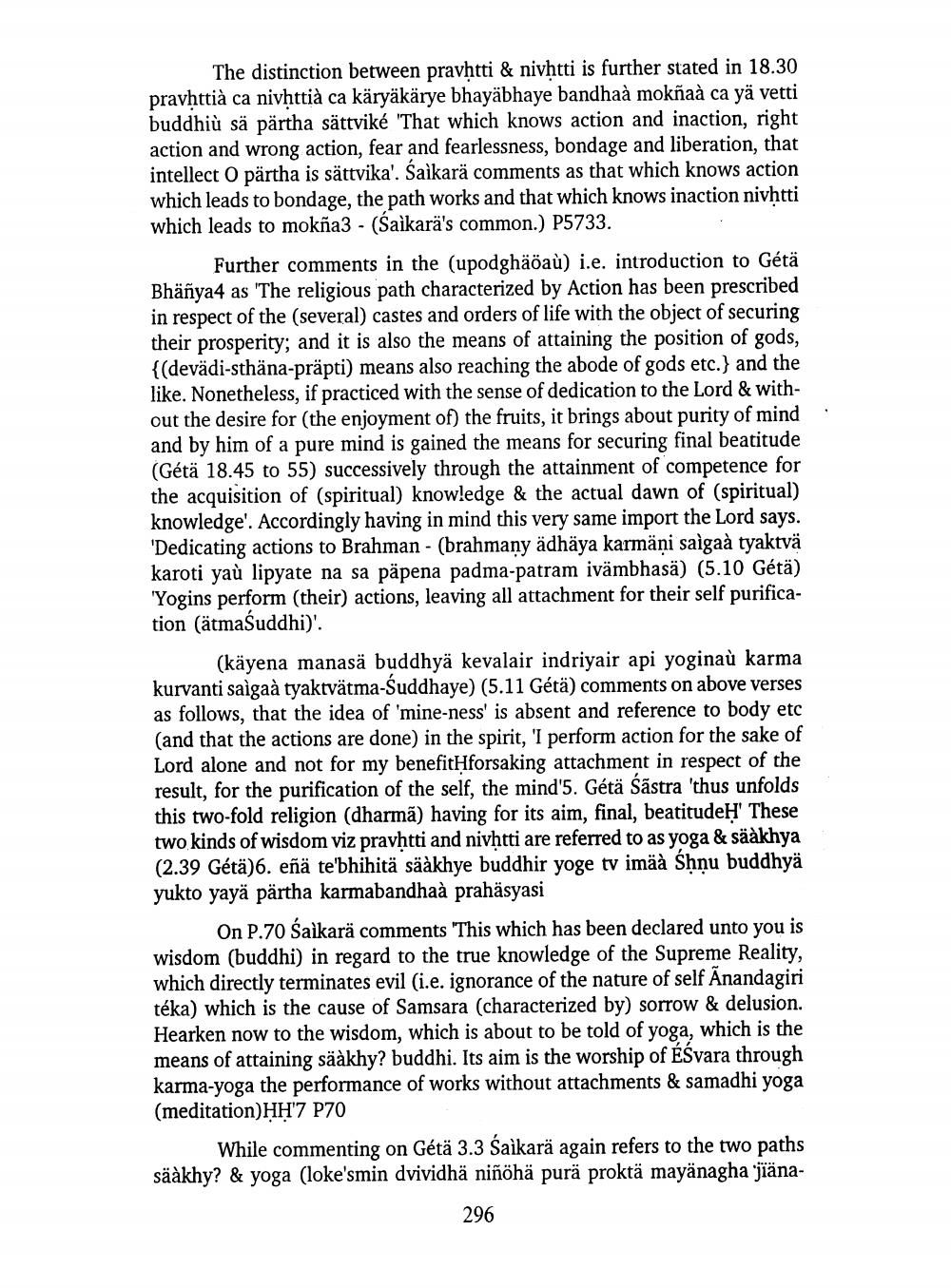________________
The distinction between pravḥtti & nivḥtti is further stated in 18.30 pravḥttià ca nivḥttià ca käryäkärye bhayäbhaye bandhaà mokñaà ca yä vetti buddhiù sä pärtha sättviké "That which knows action and inaction, right action and wrong action, fear and fearlessness, bondage and liberation, that intellect O pärtha is sättvika'. Saìkarä comments as that which knows action which leads to bondage, the path works and that which knows inaction nivḥtti which leads to mokña3 (Saikarä's common.) P5733.
Further comments in the (upodghäöaù) i.e. introduction to Gétä Bhäñya4 as 'The religious path characterized by Action has been prescribed in respect of the (several) castes and orders of life with the object of securing their prosperity; and it is also the means of attaining the position of gods, {(devädi-sthäna-präpti) means also reaching the abode of gods etc.} and the like. Nonetheless, if practiced with the sense of dedication to the Lord & without the desire for (the enjoyment of) the fruits, it brings about purity of mind and by him of a pure mind is gained the means for securing final beatitude (Gétä 18.45 to 55) successively through the attainment of competence for the acquisition of (spiritual) knowledge & the actual dawn of (spiritual) knowledge'. Accordingly having in mind this very same import the Lord says. 'Dedicating actions to Brahman - (brahmany ädhäya karmäni saìgaà tyaktvä karoti yaù lipyate na sa päpena padma-patram ivämbhasä) (5.10 Gétä) 'Yogins perform (their) actions, leaving all attachment for their self purification (ätmaŚuddhi)'.
(käyena manasä buddhyä kevalair indriyair api yoginaù karma kurvanti saìgaà tyaktvätma-Suddhaye) (5.11 Gétä) comments on above verses as follows, that the idea of 'mine-ness' is absent and reference to body etc (and that the actions are done) in the spirit, 'I perform action for the sake of Lord alone and not for my benefitḤforsaking attachment in respect of the result, for the purification of the self, the mind'5. Gétä Sastra 'thus unfolds this two-fold religion (dharma) having for its aim, final, beatitudeḤ' These two kinds of wisdom viz pravḥtti and nivḥtti are referred to as yoga & säàkhya (2.39 Gétä)6. eñä te'bhihitä sääkhye buddhir yoge tv imäà Shņu buddhyä yukto yayä pärtha karmabandhaà prahäsyasi
On P.70 Saìkarä comments "This which has been declared unto you is wisdom (buddhi) in regard to the true knowledge of the Supreme Reality, which directly terminates evil (i.e. ignorance of the nature of self Anandagiri téka) which is the cause of Samsara (characterized by) sorrow & delusion. Hearken now to the wisdom, which is about to be told of yoga, which is the means of attaining sääkhy? buddhi. Its aim is the worship of ÉSvara through karma-yoga the performance of works without attachments & samadhi yoga (meditation) HH'7 P70
While commenting on Gétä 3.3 Śaìkarä again refers to the two paths sääkhy? & yoga (loke'smin dvividhä niñöhä purä proktä mayänagha jiäna
296




